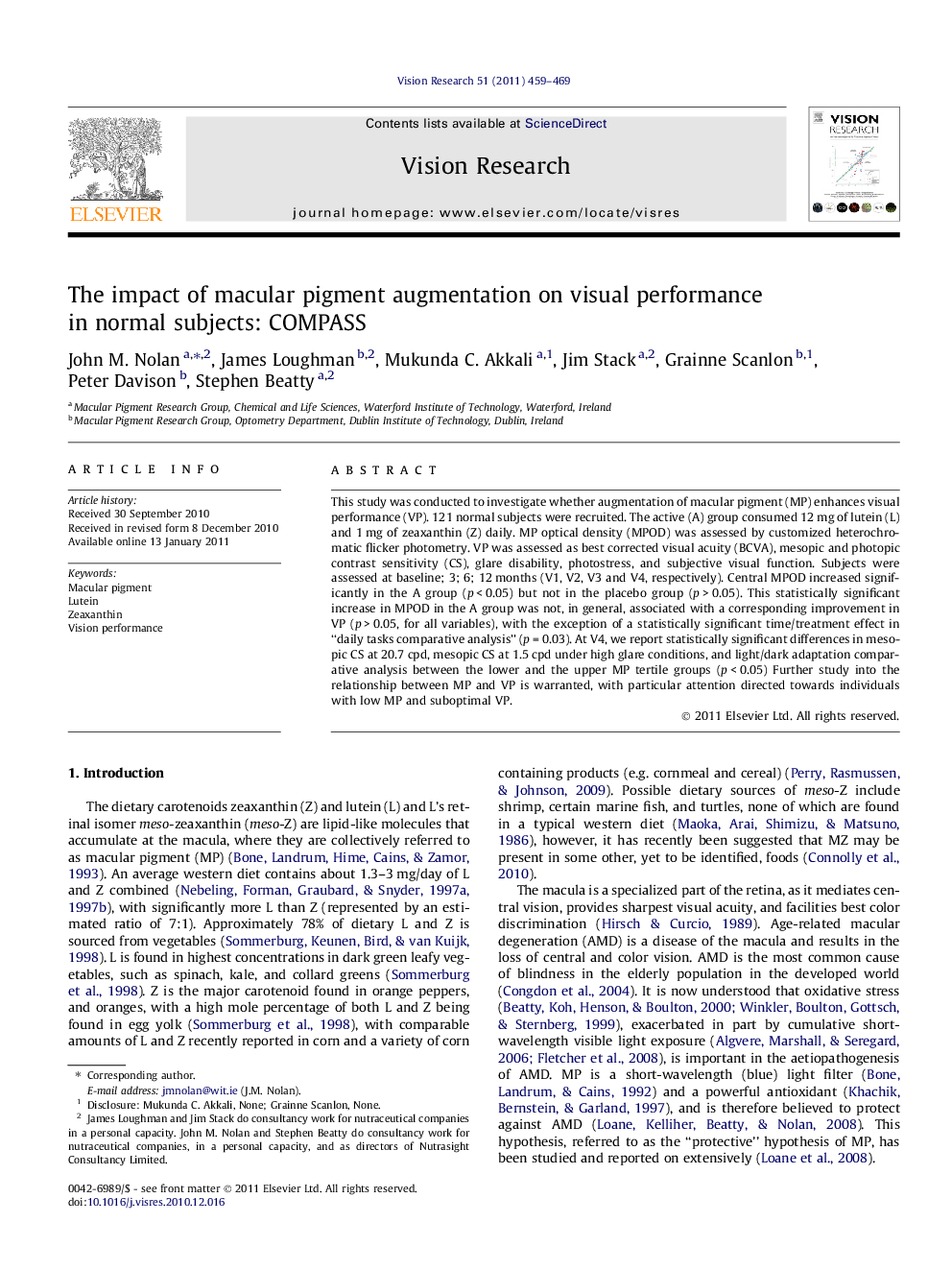| Article ID | Journal | Published Year | Pages | File Type |
|---|---|---|---|---|
| 4034246 | Vision Research | 2011 | 11 Pages |
This study was conducted to investigate whether augmentation of macular pigment (MP) enhances visual performance (VP). 121 normal subjects were recruited. The active (A) group consumed 12 mg of lutein (L) and 1 mg of zeaxanthin (Z) daily. MP optical density (MPOD) was assessed by customized heterochromatic flicker photometry. VP was assessed as best corrected visual acuity (BCVA), mesopic and photopic contrast sensitivity (CS), glare disability, photostress, and subjective visual function. Subjects were assessed at baseline; 3; 6; 12 months (V1, V2, V3 and V4, respectively). Central MPOD increased significantly in the A group (p < 0.05) but not in the placebo group (p > 0.05). This statistically significant increase in MPOD in the A group was not, in general, associated with a corresponding improvement in VP (p > 0.05, for all variables), with the exception of a statistically significant time/treatment effect in “daily tasks comparative analysis” (p = 0.03). At V4, we report statistically significant differences in mesopic CS at 20.7 cpd, mesopic CS at 1.5 cpd under high glare conditions, and light/dark adaptation comparative analysis between the lower and the upper MP tertile groups (p < 0.05) Further study into the relationship between MP and VP is warranted, with particular attention directed towards individuals with low MP and suboptimal VP.
Research highlights► Identifying that macular pigment significantly increased in the active group. ► Less glare disability for subjects with high macular pigment. ► Improved mesopic contrast sensitivity for subjects with high macular pigment. ► Identifying the need for further research in subjects with low macular pigment.
